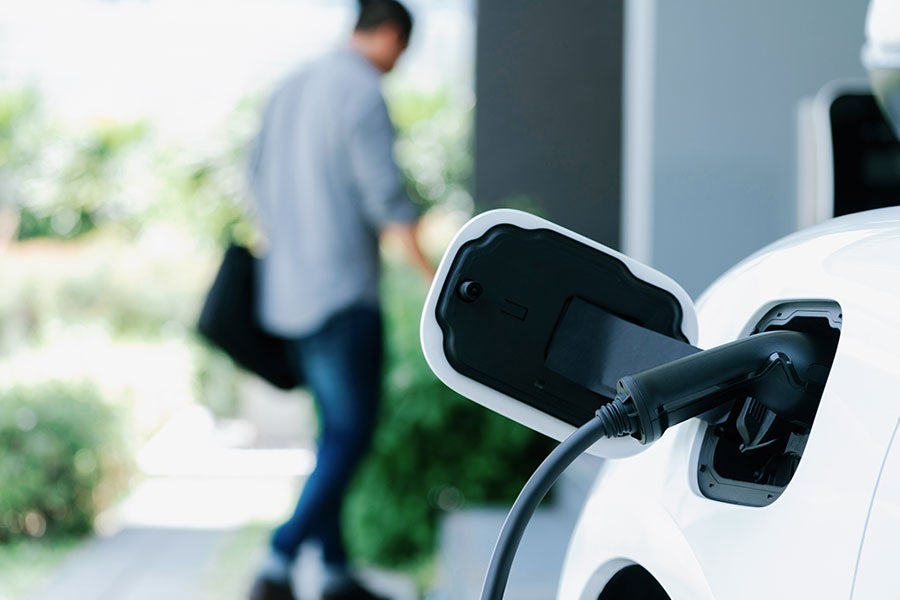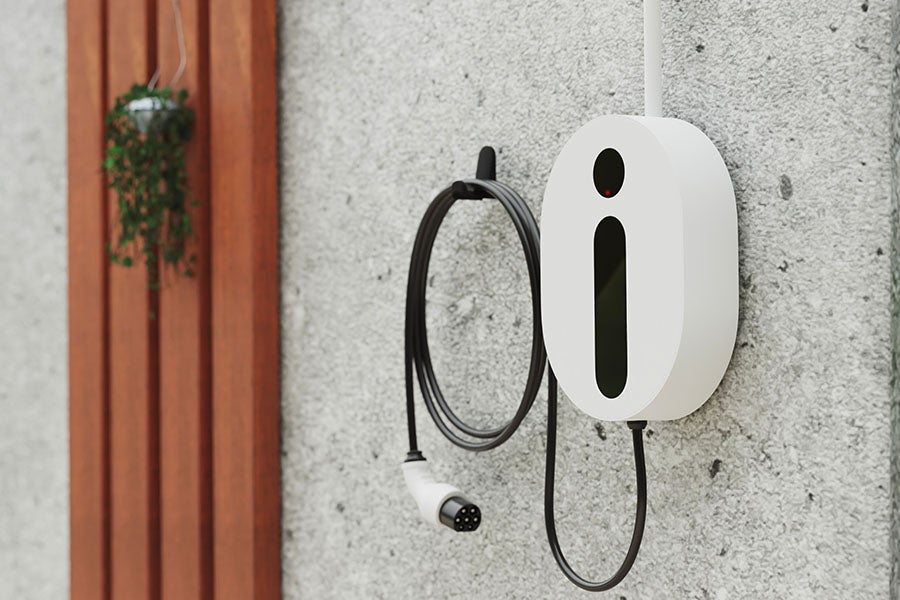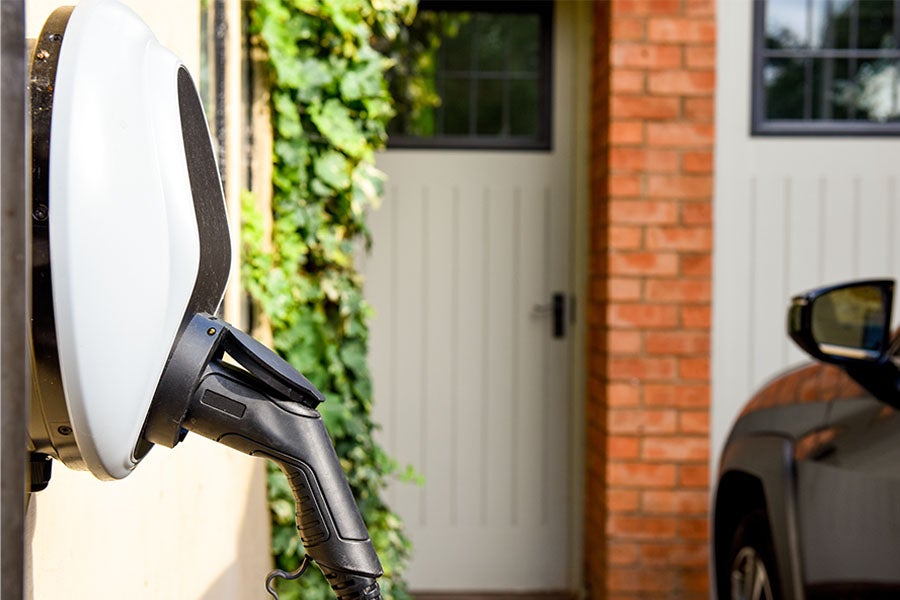Energy saving advice
Tethered or untethered EV charger: What should I get?
13 Nov 2024 • 5 minutes

Energy saving advice
13 Nov 2024 • 5 minutes

If you’re an electric vehicle (EV) owner, or you’re thinking of buying one, you may be interested in installing an EV charger at home.
EV chargers come in all shapes and sizes, so the choice can be overwhelming. You'll also need to decide whether a tethered or untethered charger is right for you.
In this guide we’ll look at the pros and cons of each type of charger; so you’ve got all the information you need to make a more educated choice.
In effect, both tethered and untethered EV chargers work in the same way – with the main purpose being to charge an electric car.
The difference between them is the charging cable. In simple terms, tethered chargers have a fixed cable that can’t be removed. Whereas untethered chargers have a detachable cable.
If you’re just stepping into the world of EV charging, you may want to start by reading our complete guide to EV charging at home - it’s a great starting point.

A tethered EV charger features a permanently attached charging cable that stays plugged into the charging point, making it easy for users to plug in their electric vehicles at home.
Tethered chargers are a popular choice with EV owners because of their convenience and ease of use. They work by simply unravelling the cable from the charging port and inserting it into your vehicle, much the same as filling up your car with petrol.
One of the biggest benefits of tethered chargers is that the price of the charging cable is included in the price of the EV charger unit.
Most manufacturers provide 5-metre cables as standard, but they can vary between 2-10 metres. So, before buying a tethered charger, it's worth checking what length of cable is included – in a lot of cases you can upgrade to a longer cable at an extra cost, if you need to.
If you’re looking to find out more about home charging costs, take a look at our guide on how much it costs to charge your EV.

Untethered EV chargers are a type of charging station that don’t have a permanently attached charging cable. Instead, they have a port which allows users to connect a charging cable and attach it to your electric vehicle.
Arguably, one of the biggest advantages of untethered chargers is that they’re more future proof. This is because the cable can easily be replaced without having to pay for a whole new charging unit.
Another advantage of the detachable cable is that you can take it wherever you travel, meaning you’re not just restricted to charging your car at home. So, you can use it on public EV chargers, providing they have the right connection type for your car.
This also means that any family or friends with an electric vehicle can plug their own charging cable into your home EV charger.
It’s fair to say that untethered chargers are a bit more pleasing to the eye, too. As they’re more compact and the charging cable can be removed, they often look tidier than tethered alternatives.
So, if you’re concerned about how your unit will look aesthetically then you’re probably best to look at untethered chargers.
Hopefully this article has given you some food for thought when considering what sort of EV charger would be best suited to you and your needs. Whether you’re looking for the convenience of just being able to plug in your car overnight, or you’re wanting to have it ready when you’re on the road – there’s a lot of choice on the market.
It can also depend on budget or aesthetics, so we’d always recommend shopping around to find the right EV charger for you.
If you’re looking to install an EV charger at your home, we’ve teamed up with BOXT to bring you fast EV charging at home, with transparent fixed prices and an effortless installation service. Answer a few simple questions and get a free quote today.
Our help & advice articles cover Plumbing, Home heating, Electrical, Energy-saving and Home maintenance.